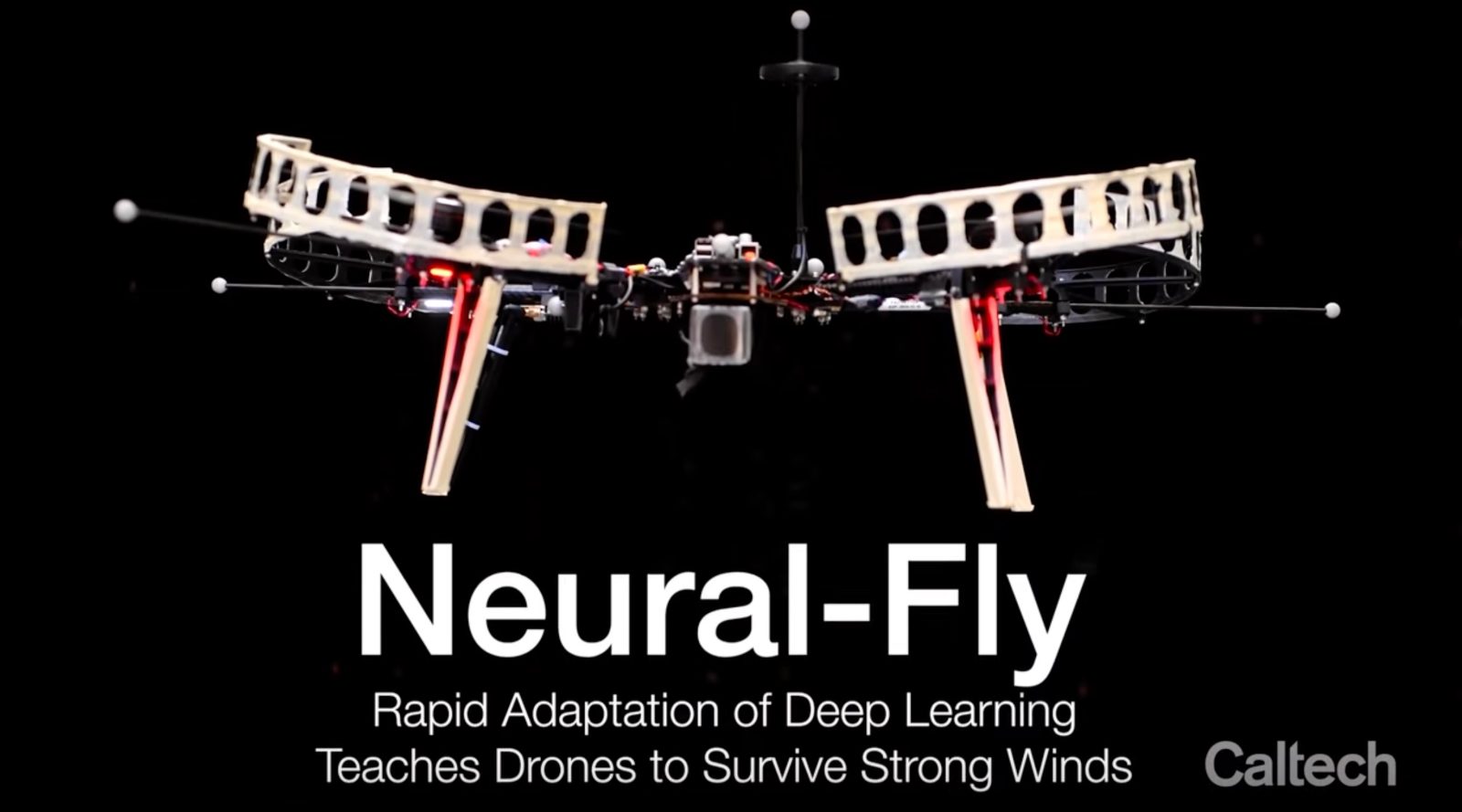
Caltech researchers are developing a drone with rapidly reacting artificial intelligence (AI) capacities that allow it to adapt in flight to extreme wind similar to tornado or hurricane conditions.
A team of engineers at the California Institute of Technology in Pasadena built their wind resisting drone around what they’re calling “Neural Fly” – a deep learning, quick response application to changing wind conditions.
The tech operates from a relatively limited amount of flight data previously gathered in blustery conditions. The onboard AI works from and builds on that pre-programmed information to respond to gusts its host UAV encounters. The system recalculates otherwise destabilizing surrounding airstream five times per second, enabling the craft to shift motor and path activity in ways that can withstand blasts of changing power and direction.
The potential benefits of the innovation are not restricted to responders or monitors of extreme events like tornadoes, hurricanes, or other storms. It could also be integrated into myriad commercial and public drone missions, and next-generation aircraft like air taxis that may encounter unexpected wind disturbances.
Read: Drone tornado footage from Kansas shows unbelievable devastation
As described in an article in Science Robotics, the Caltech program is not only astonishing in the ability it gives the five-pound test drone to adjust to and deal with shifting winds of up to 43.6 km/h, but also the manner researchers realized they’d only need to supply their system with small data sets to function and build itself from.
“Neural-Fly builds on two key observations that aerodynamics in different wind conditions share a common representation and that the wind-specific part lies in a low-dimensional space,” their abstract reads. “To that end, Neural-Fly uses a proposed learning algorithm, domain adversarially invariant meta-learning (DAIML), to learn the shared representation, only using 12 minutes of flight data.”

The drone-AI platform was tested Caltech’s Real Weather Wind Tunnel – a customized assembly of over 1,200 computer operated fans that reproduce real-world conditions ranging from soft winds to tempest gales. In those trials, the system not only enabled the UAV to stay aloft and relatively stable amid the shifting blasts, but also continue to fly its series of figure-eight patterns without lurching off path.
The Caltech group has also learned that data gathered by one drone exposed to winds in flight can be transmitted to others, creating the potential for groups of craft to operate autonomously in otherwise unnavigable atmospheres.
In addition to smaller UAVs, the team is also developing larger craft with the AI platform aboard for possible use as autonomous air ambulances capable of accessing – and, if needed, extracting –victims in emergencies requiring fast transportation to hospitals.
FTC: We use income earning auto affiliate links. More.


Comments